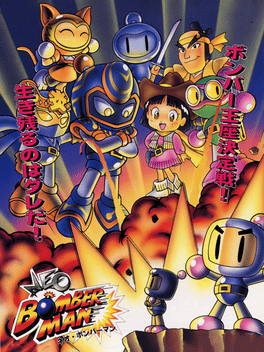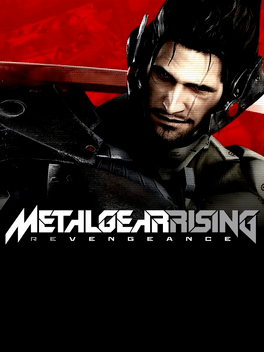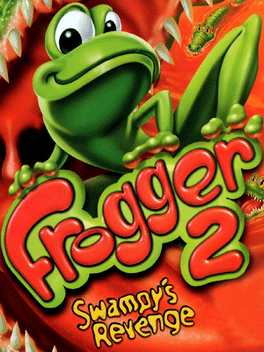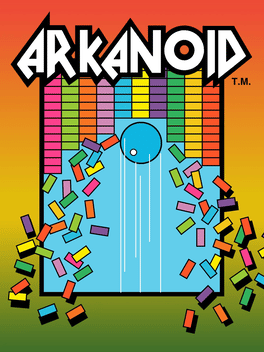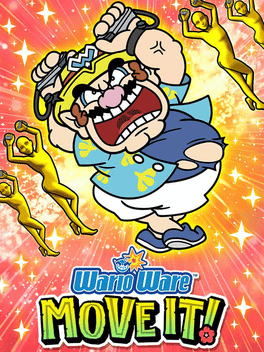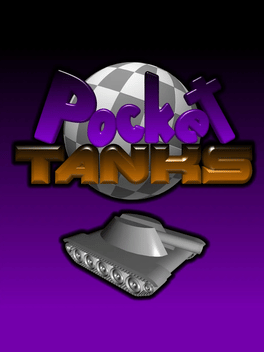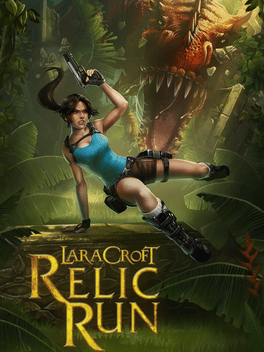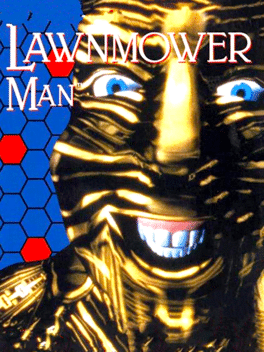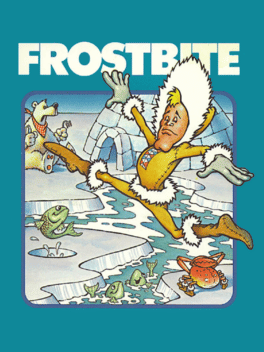Most Popular Game Boy Games - Page 3
-
Disney's Ariel: The Little Mermaid
1992
star 4Disney's Ariel: The Little Mermaid is an Action game, developed by Blue Sky Software and published by Tec Toy, which was released in South America in 1992. -
Neo Bomberman
1997
Neo Bomberman
1997
star 8.4The gameplay consists of walking through maze-like areas filled with monsters with a goal of opening the gate leading to the next area. Playing as a bomberman, the player can lay bombs to destroy all of the monsters, which will subsequently open the gate. Destroying blocks in the maze may uncover useful items including remote control bombs, accelerators, hearts, and increased firing range. Neo Bomberman includes Bosses that appear after each zone. Each zone is harder than the last, some featuring new traps and level obstacles such as conveyor belts. -
Metal Gear Rising: Revengeance - Jetstream
2013
star 6.5Jetstream is the first story DLC for Metal Gear Rising: Revengeance. Initially a commercial release, it was made available for free around the time of the PC version's release, where it was included by default. It is a separate story campaign with Samuel 'Jetstream' Rodrigues as the protagonist, a boss for Raiden in the original game. -
Alien
1982
Alien
1982
star 7.3Fox Video Games made the first leap into licensing the Alien property for video games with what was essentially a Pac-Man clone skinned with elements from the 1979 film. Players controlled a human collecting Alien eggs (dots) and small planet and spaceship symbols (fruits) in a maze abroad the USCSS Nostromo while avoiding Alien drones (ghosts). Drones could be killed by shooting them with a flamethrower or collecting symbols that would stun them (flashing dots). -
Frogger 2: Swampy's Revenge
2000
star 7.9Because of his envy of Frogger's achievements and the attention he receives, Swampy the Crocodile hatches a devious scheme to invade his pond and kidnap Lillie Frog's brothers and sisters. What a vile crocodile! Assuming the role of the vengeful frog, you must thwart the evil crocodile and save the innocent tadpoles from harm. Divided into various interactive 3D worlds, Frogger's mission spans over 30 levels crammed with life threatening obstacles and monstrous cronies blocking the path to victory. Fortunately, the frog has been endowed with supreme powers including regular hops and super-hops, the ability to float over water and land, a Power Croak for calling missing tadpoles and a bug-seeking tongue. -
Tiny Wings
2011
Tiny Wings
2011
star 7.5A game about the dream of flying on iPhone, iPod Touch & iPad. You have always dreamed of flying, but you have tiny wings. -
Arkanoid
1986
Arkanoid
1986
star 8.8NES port of Arkanoid. The original Breakout concept involves controlling a bat at the bottom of the screen and using it to catch and direct a ball so as to hit all the bricks which are arranged at the top of the screen. It was unpopular for over a decade, before Taito revived it with some new ideas in this arcade game. The game's plot redefines the bat as a Vaus spaceship, the ball as an energy bolt, and the bricks form a mysterious wall stopping the ship from progressing to safety. By the mid-80s, power-ups were popular in most types of arcade games, and Arkanoid features them. They are caught by positioning the bat below them as they fall (meaning that you risk missing the ball if you go for them at the wrong time). The power-ups include lasers (which are mounted to each side of the ship and allow you to shoot out the blocks), a catching device (so as to be able to fire the ball off at a different angle every time you hit it) and one that slows the bolt down. -
WarioWare: Move It!
2023
WarioWare: Move It!
2023
star 7.4Strike a pose with a multitude of motion-based microgames in a brand-new entry in the WarioWare series! Grab a pair of Joy-Con controllers and get moving as you gently shake, punch, dance, wiggle, and even curtsey through over 200 lightning-fast microgames (minigames that last just a few hilarious seconds). A second player can use another set of Joy-Con controllers to join the treasure-guarding, sheep-twirling fun. Up to 4 players, each with one Joy-Con controller, can laugh out loud in the local Party Mode’s minigames like a dicey board game with Wario-style rules. -
Metal Gear Rising: Revengeance - Blade Wolf
2013
star 7Blade Wolf is the second story DLC for Metal Gear Rising: Revengeance. Initially a commercial release, it was made available for free around the time of the PC version's release, where it was included by default. It is a separate story campaign with Blade Wolf as the protagonist, a boss for Raiden in the original game. It is a robot wolf with a chainsaw on its back who originally worked for Mistral. The campaign is set prior to the encounter with Raiden at Abkhazia in the original game and the story is told as a flashback. Just like the first DLC most of the environments are reused from the original game, most notably R-01. -
Atomic Punk
1991
Atomic Punk
1991
star 7.5Atomic Punk (alternatively known as Dynablaster or Bomberman) is an arcade game featuring a single and multiplayer mode. In the year 2091, robot contests have gained popularity. Only the strongest robot can survive. -
Dragonfire
1982
Dragonfire
1982
Commodore VIC-20 ColecoVision Atari 2600 Commodore C64/128/MAX ZX Spectrum TRS-80 Color Computer Intellivision Apple IIstar 6.2Dragons have driven the Royal Court from the Castle "O we are lost, lost" laments the King. "Without our vast treasures we cannot raise an army 'gainst these accursed dragons. Our Kingdom must now languish under lizards!" "Nay, not so, my liege!" replied the young Prince. "None knows that Castle, those many bridges and storerooms, better than I. Give me leave and I shall loot those lizards of their plunder and restore my lord to his birthright." "Brave boy," said the King, fully pleased. "But," he added darkly, "beware dread dragonfire!" -
Game & Watch Gallery 3
1999
star 6.7Flash back to the '80s with Game & Watch Gallery 3, featuring original and updated versions of five handheld classics. -
Pocket Tanks
2001
Pocket Tanks
2001
star 7The fastest game of artillery you'll ever play. Pocket Tanks is designed to be easy to learn, and fun to master. All the excitement of lobbing projectiles over a mound of dirt without all the complicated details found in most artillery games. Select your angle, power, and fire over 30 distinct weapons at your opponent. There is an innovative Weapon Shop to keep the game moving fast and a Target Practice mode for experimenting with all the weapons "no holds barred!" -
Namco Museum
2017
-
Lara Croft: Relic Run
2015
star 3.9Set shortly after Lara Croft and the Temple of Osiris, the game follows Lara as she goes in search of fellow archeologist Carter Bell. On her search, she uncovers a world-threatening conspiracy. Relics collected during play sessions unlock journal entries that reveal pieces of the story and make new locations available. -
The Lawnmower Man
1993
The Lawnmower Man
1993
star 5.9The Lawnmower Man is the game based on the 1992 movie of the same name (itself loosely based on a Stephen King short story) starring pre-Bond fame Pierce Brosnan as Dr. Lawrence Angelo, a scientist working for Virtual Space Industries in "Project 5", a secret research that attempts to increase the intelligence of primates using psychotropic drugs and VR training. With his reluctance to aim the research to military purpose, after one of the chimps escapes and shoots a guard in the process he is given a forced vacation, and while taking notes on the need for experiment with a human subject, he notices Jobe Smith (Jeff Fahey), a simpleton who makes his living on odd jobs such as mowing the grass (hence, the title role). The first experiments quickly increase Jobe's intelligence, and while after an accident Angelo stopped the experiments, The Shop, a secret agency overviewing Project 5, reinserted the drugs responsible for violent behaviour into the program and sped up the treatment. As Jobe starts to develop telekine -
Game & Watch Gallery 2
1997
star 6.7Game & Watch Gallery 2 is the sequel to Game & Watch Gallery released in 1997 for the Game Boy, only in Japan. This version is a colorized version released for the Game Boy Color in 1998. The game included six revisions of classic Game & Watch games, one of which is not playable from the beginning and must be unlocked. This colorized version was never released in Japan, although a prototype was found. -
Bomberman '93
1992
Bomberman '93
1992
star 6.8Tension, strategy, action, excitement - Bomberman's back! You can now battle against up to four computer-controlled maniacs by yourself for the ultimate five bomberman mode. Choose from seven exciting new stages with loads of new power-up items like werps, conveyer belts, revolving doors and even kicking bombs! Or for portable thrills, go head-to-head against a friend using TurboExpress for non-stop action. The best competitive game is back, and it's more intense than ever! -
TumblePop
1991
TumblePop
1991
star 7.6Tumblepop is a 1991 platform arcade video game developed by Data East first published in Japan by Namco, then in North America by Leprechaun Inc. and later in Europe by Mitchell Corporation. Starring two ghosthunters, players are tasked with travelling across different countries, capturing enemies and throwing them as bouncing ball, jumping on and off platforms to navigate level obstacles while dodging and defeating monsters in order to save the world. -
Frostbite
1983
Frostbite
1983
star 6.2You're an Eskimo who wants to build an igloo to live in during the cold season. To do this, you must jump from ice-block to ice-block, while avoiding wildlife such as birds and crabs. Coming with contact with any of these will cause them to push you off the block and into the deadly water. Once you have built your igloo, you must enter it to proceed to the next level. Remember, you must build it before the temperature drops to 0°. You have four lives.

